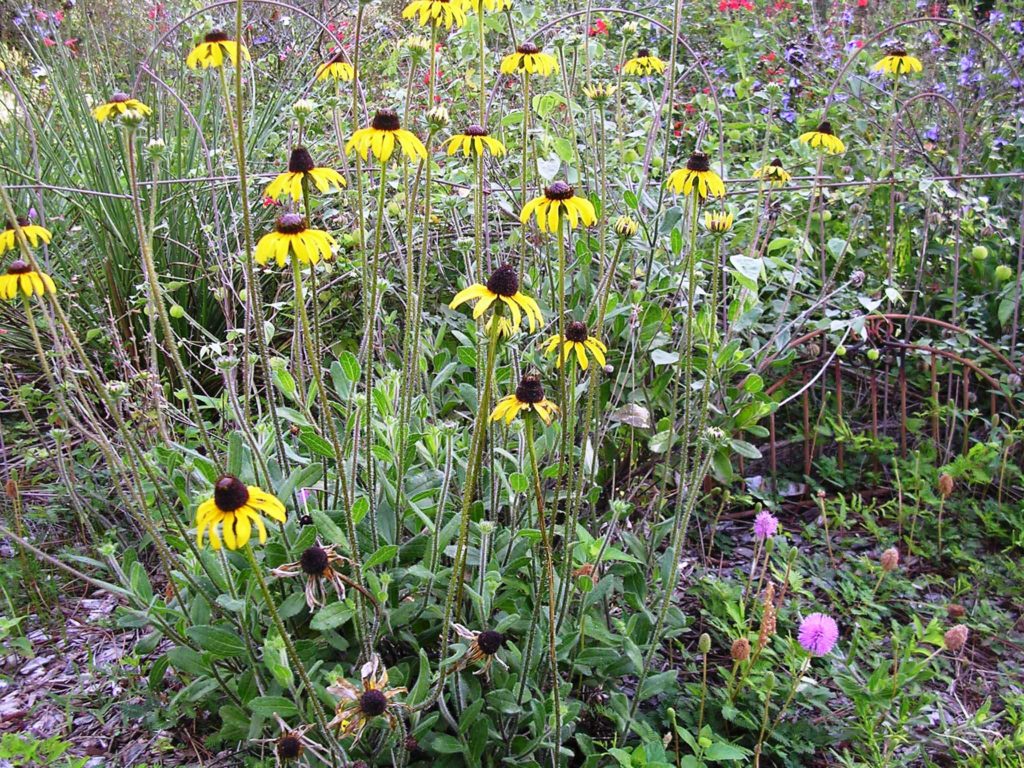
Black Eyed Susan
Rudbeckia hirta
The three inch wide yellow flowers of this 18 inch tall clumping wildflower are seen throughout the summer across the U.S. Although most of the flowers have a brown center, some plants have flowers with yellow centers. These must be propagated from cuttings in order to keep this trait.
Black Eyed Susan is found along roadsides and other areas with rich, moist soil. It is thought that this plant has spread to new sites by hitching a ride in “honey apples.” I have found it to be more abundant in areas near horse trails.
The Three inch narrow leaves of Black Eyed Susan have short stiff hairs on them. They are not irritating. The flowering of individual plants lasts for nine months or more in the garden and they often reseed in rich soil. If the soil dries out too much though, the plant will recede.
Although this is often used as a butterfly nectar plant, the seeds are food for Goldfinches as they migrate north in the spring. Sometimes we have a “fallout” during the spring migration. This is when high winds force migrating birds to take a break until things ease up a bit.
Nothing like having Golf Finches, Indigo Buntings, Cedar Waxwings and other species flying about the yard for a few days or weeks. We have a feeder with white millet in it for the Painted Buntings and one year dozens of Goldfinches dropped during a “Fallout” and shared it with them.
Black Eyed Susan mixes well with Blue Eyed Grass, Prairie Iris, Spiderwort, Sunshine Mimosa, Coreopsis, Florida Lily, Tampa Verbena, Pineland Petunia and native grasses and ferns. This is one of the most popular wildflowers in America.
Please see these links for more information click here, and click here.